
As a kid, Saturday mornings were our time. The rest of the week seemed to belong to adults – teachers and parents -who filled our lives with homework and chores. But, Saturday mornings? Oh, they were beautiful! The house was quiet. Clad in our pajamas for much longer than we should be, we would sit cross-legged on the floor, bowl overflowing with sugary cereal, trying to decide which of the many shows to watch this week.
The 1970s was part of a Golden Age of Saturday morning cartoons. So many studios were in the game, and children had so many choices. Fifty years ago, near the start of this decade, the three major networks were fully invested in Saturday morning cartoons, and the programming was an essential part of their fall line-up.
In this last part of a three-part article, we take a trip back in time fifty years ago to “throwback” to the cartoons that debuted that season. We had just come out of a summer in which Willie Wonka and the Chocolate Factory had debuted in theaters, and All in the Family was changing prime time TV. While all of that was happening, here are the cartoons that premiered in September of 1971.
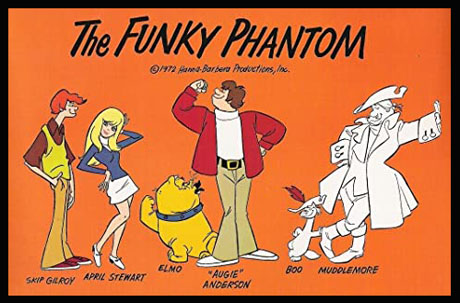
ABC
Hanna-Barbera’s The Funky Phantom debuted this fall on ABC. The studio took its “Scooby-Doo Model” and applied it to a new format. Here, instead of a group of “meddling kids” paired up with a Great Dane, the kids were partnered with a ghost.
That ghost was Johnathan Wellington Muddlemore, who went by the name “Mudsy.” The kids found The Phantom (along with his ghost cat, Boo) when the gang ducked into a creepy house on a rainy night. Adjusting a grandfather clock that was displaying the wrong time, Mudsy appeared.
The legendary Daws Butler provided the Phantom’s voice, doing a “riff” on Snagglepuss. Instead of “Exit, stage left!” Mudsy had lines like, “Who needs secret panels? A scared ghost makes his own exits!”
Butler is essentially doing his take on Bert Lahr, playing the Cowardly Lion in The Wizard of Oz, and that trembling performance is perfect for The Funky Phantom.
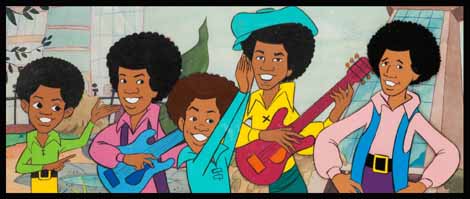
Also debuting on ABC in the fall of 1971 was The Jackson 5ive. From Rankin/Bass, the studio synonymous with prime-time holiday specials, came this animated version of one of music’s most iconic singing groups, premiering at the height of their popularity.
Because of this, the Jacksons’ schedules didn’t allow them to record the voices of their animated counterparts, which instead were provided by sound-alike voice actors. However, each episode also featured one of the group’s hit songs played over the soundtrack (these included tunes like “ABC” and “The Love You Save,” which opened the show).
The brothers were even given “pet sidekicks,” adding a bit of animated fun to the proceedings: a snake named Rosey and two mice called Ray and Charles (yup, named after the legendary singer).
And, in a touch of Rankin/Bass “comfort,” one can hear Paul Frees, (another voice acting legend, who appeared in so many of the studio’s work) as The Jacksons’ manager.
CBS
Over on CBS, Hanna-Barbera was back in sitcom-like format with Help!…It’s the Hair Bear Bunch, a great high-concept show with a unique title. Taking place at the “Wonderland Zoo,” Help!…It’s the Hair Bear Bunch, centers on three bears, Hair Bear (voiced by Daws Butler, sounding a lot like comedian Phil Silvers), the leader of the “Bunch,” with his groovy, 70s afro; Square Bear, the dimwitted member of the group (voiced by Bill Callaway) and the diminutive Bubi Bear (Paul Winchell, with an inventive vocal tick).
The three are always looking to outsmart the Zookeeper Mr. Peevely (John Stephenson, doing a perfect caricature of Joe Flynn from McHale’s Navy) and his sidekick botch (Joe E. Ross at his “Ooh! Ooh!” best).
It’s fitting that the main character on the show sounded like Phil Silvers, as Help!…It’s the Hair Bear Bunch has similarities to Sgt. Bilko/The Phil Silvers Show (which, in turn, inspired Hanna-Barbera’s Top Cat).
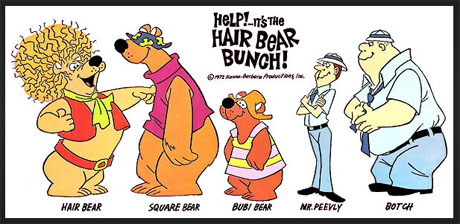
Also on CBS, this fall saw a sequel to The Flintstones entitled The Pebbles and Bamm Bamm Show. In this series, Fred and Barney’s daughter and son are teenagers, and it follows their misadventures with their friends. As part of the show, there’s a new, eclectic group of supporting characters, including Penny and Wiggy, Pebbles’ best friends, Moonrock, the “brainiac” science student, Bronto, head of the chopper gang and Shleprock, the unluckiest and most entertaining character on the show.
Regarding secondary players, Fred, Barney, Wilma, and Betty are relegated to supporting roles in this series (and, interestingly, none of them aged).
Sharp-eared fans will note that the voices of the two main characters were two prominent sitcom stars: Pebbles, voiced by Sally Struthers, had just debuted that same year as Gloria on All in the Family. Bamm-Bamm was Jay North, most famous for playing Dennis the Menace on the sitcom that ran from 1959-1963.
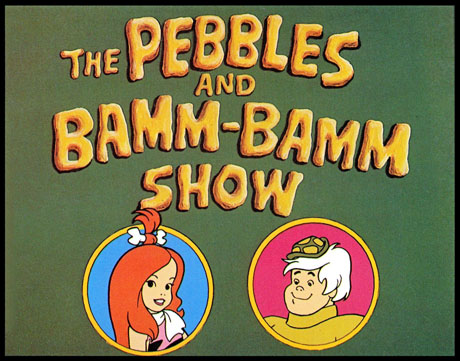
NBC
Over on NBC…no new cartoons debuted in the fall of 1971. The network instead continued with already popular cartoon series like The New Pink Panther Show and The Further Adventures of Dr. Dolittle, as well as live-action shows that had debuted in previous seasons and had been successful for them.
The fact that no new programming was introduced on the network, coupled with the fact that CBS and ABC only premiered a select few new cartoons, demonstrates just how prevalent Saturday morning TV was at this time, in that shows were popular enough to return for another season.
Decades later, this wouldn’t be the case, as many shows barely made it through half the season.
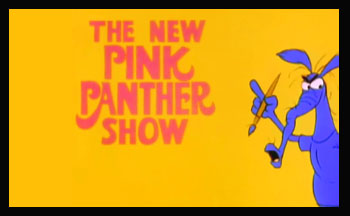
But, fifty years ago, Saturday morning television was thriving. Sadly, that’s not the case anymore.
Cable gave way to home video, and home video gave way to streaming. Saturday morning programming for kids somehow became an antiquated notion within that and all the other technology in-between.
Somehow, however, it was more than the shows. For multiple generations, Saturday morning television was an experience.
Authors (and brothers) Timothy and Kevin Burke summed it up best in their 1999 book, Saturday Morning Fever when they wrote: “We discover in Saturday morning that we share our childhood memories with strangers, that others sat in front of their televisions and thought the same things we did. It’s a glorious discovery. No wonder everyone babbles excitedly at the outset of such a conversation.”
- An Eye for A Classic: The 60th Anniversary of “Mr. Magoo’s Christmas Carol” - December 22, 2022
- A Very Merry Mickey: The 70th Anniversary of “Pluto’s Christmas Tree” - December 19, 2022
- A Fine French Feline Film: The 60th Anniversary of “Gay Pur-ee” - December 12, 2022


 September 29th, 2021
September 29th, 2021  Michael Lyons
Michael Lyons  Posted in
Posted in  Tags:
Tags: 






